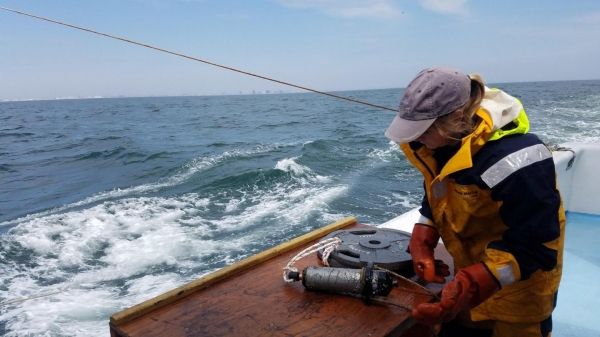For the endangered Atlantic sturgeon and the commercially and recreationally important striped bass, the Delaware-Maryland-Virginia coastal shelf serves as an important spring and fall “flyway.” Typically thought of as an established aerial route used by migratory birds to travel between feeding and breeding grounds, a recent study by scientists at the University of Maryland Center for Environmental Science applies the term to fish species of concern. Authors suggest that the development of wind farms on the DelMarVa coastal shelf, 17-26 miles from Ocean City’s shoreline, may alter the migratory behavior of these fish as new wind turbines in this otherwise featureless region could create habitat around which fish linger.
Studies within the Maryland Wind Energy Area—the coastal shelf waters leased by the Bureau of Ocean Energy Management for offshore wind farms—prior to construction activities reveal that Atlantic sturgeon and striped bass are frequent visitors. Seasonal trends lead scientists to believe that the wind energy area lies within an important migration corridor for both species. Atlantic sturgeon were most commonly observed moving through the area during the spring and fall, while striped bass had an increased migratory presence in spring and winter. The Atlantic sturgeons’ “flyway” tended to favor shallower, warmer waters, while striped bass were more likely to be found at great depths and cooler conditions.
Both species spent longer periods of time in the corridor during the autumn and winter. This trend was particularly strong for striped bass, with many individuals prolonging their presence on the outer shelf during winter. However, during the summer, Atlantic sturgeon were rarely detected and striped bass were absent.
Read more at University of Maryland Center for Environmental Science
Image: Researcher Ellie Rothermel configures an acoustic receiver off coast of Ocean City, Maryland, to monitor to the movement of Atlantic sturgeon and striped bass off the Delmarva coastline. (Credit: University of Maryland Center for Environmental Science/Mike O'Brien)


